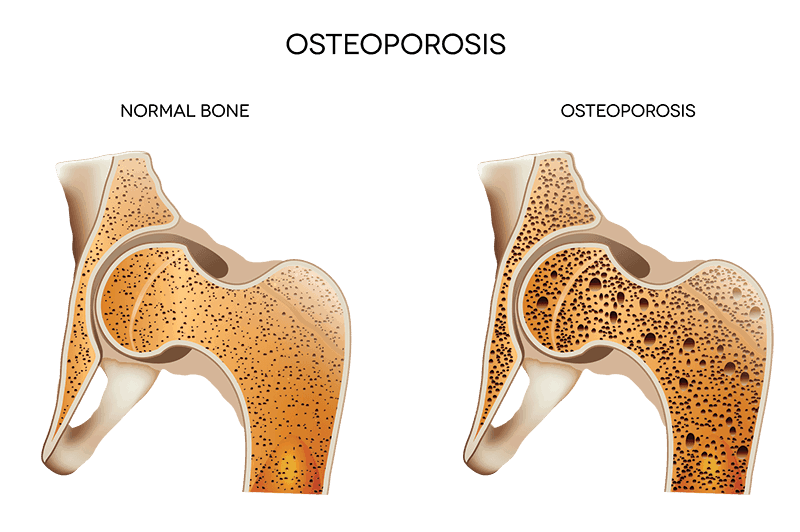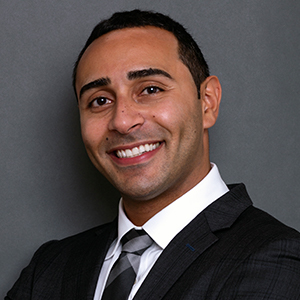What causes Osteoporosis | Causes and Consequences
July 12, 2019
What Causes Osteoporosis?
Osteoporosis is a bone disease that causes a reduction in the bone density in the body. This loss of bone density weakens the bones and makes them more fragile and more susceptible to bone fractures. Estimates show that more 50 million people in the United States have, or are at risk of having osteoporosis.
You may wonder what causes osteoporosis, but the truth is that many factors can cause, or put a person at higher risk for, this bone condition. If you have osteoporosis and you are experiencing pain, it is vital that you seek medical attention from the best pain doctor in your area.

Causes of Osteoporosis
Before learning what causes osteoporosis, you must first understand the pathophysiology of this condition. Osteoporosis occurs when there is not enough new bone growth to replace bone resorption. This process is referred to as bone remodeling, and it is vital for proper bone health and density. Calcium and phosphate are vital minerals needed for proper bone development. Calcium is stored in the bones of the body and then reabsorbed into the blood to promote proper organ, such as the brain and heart, functioning. Insufficient calcium intake can negatively impact bone growth and resorption, which can lead to osteoporosis.
A reduction in certain hormones, including estrogen for women and testosterone for men, also are linked to osteoporosis. As a person ages, these hormone levels tend to decrease. This is especially true for people over 50 years old. Women, in particular, are at greater risk of osteoporosis during and after menopause because their estrogen level significantly decreases during this time.

Risk Factors for Osteoporosis
While the exact answer for what causes osteoporosis is still being researched, several factors put people at greater risk for having this condition, including:
- Age – Women and men over the age of 50 are at higher risk for osteoporosis.
- Gender – Women are far more likely to suffer from osteoporosis than men. In fact, studies suggest that 80 percent of those affected by osteoporosis are women.
- Ethnicity – Studies show that people that are Caucasian or Asian are at a higher risk for osteoporosis.
- Inactivity – Lack of physical activity also has been linked to osteoporosis.
- Genetics – People who have a family history of osteoporosis are at a significantly higher risk for osteoporosis.
- Improper Diet – Diets low in calcium and Vitamin D may also increase a person’s risk for osteoporosis.
- Eating Disorders – People, especially women, who suffer from eating disorders, such as anorexia are more likely to suffer from osteoporosis.
- Smoking/Excessive Alcohol Intake – Both smoking and excessive alcohol intake are linked to this bone condition.
- Medical Conditions – Numerous medical conditions, such as rheumatoid arthritis, thyroid conditions, and bone cancer may increase the risk of osteoporosis.
- Medications – Various medication, including blood thinners, immunosuppressants, and corticosteroid may also increase the risk for osteoporosis. Go to https://www.paintreatmentspecialists.com/what-is-osteoporosis/ for a comprehensive list of these medications.
Consequences of Osteoporosis
Osteoporosis can be dangerous because it puts a person at a higher risk for bone fractures. With this bone disease, a simple fall can lead to a major medical emergency. Osteoporosis is sometimes referred to as the “silent disease” because most people don’t even realize they have it until they break a bone. The problem is that osteoporosis develops over time and displays very little if any, symptoms. Even as the condition progresses, many people mistake the most common symptom of joint and back pain, as just a sign of getting older. This misconception makes it extremely important for people to see an experienced arthritis pain doctor to obtain a proper diagnosis. Early detection can help slow the onset of osteoporosis.
Osteoporosis Treatments
Now that you know what causes osteoporosis, it’s time to consider the various treatment options available. There are several different types of non-surgical treatments to choose from. Here’s a look at the answers to some of the most common osteoporosis treatment questions.
Does physical therapy reduce the pain associated with osteoporosis?
Increased physical activity can help to strengthen your bones and build bone density. Weight-bearing exercises, such as walking or weight training, are best. Physical therapy can help by developing a treatment plan and showing you which exercises work best for promoting healthy bones.
Is there medicine available to help treat osteoporosis?
Yes, there are several types of medication that your doctor can prescribe to treat osteoporosis. The most common type is Bisphosphonates, such as Alendronate and Ibandronate. Raloxifene is ideal for women with low estrogen levels and helps to improve bone mass. Other common medicines used to treat osteoporosis include Teriparatide and Denosumab.
Can a change to my diet help fight osteoporosis?
Yes. Diets rich in calcium and Vitamin D have been known to help fight the effects of osteoporosis. This mineral and vitamin help to promote healthy bone growth. You also want to reduce the amount of high-phosphorus food, such as red meat, you include in your diet.
Knowing what causes osteoporosis is just the first step. If you think that you might have osteoporosis, or you are experiencing any type of back pain, it is crucial to seek medical attention from an experienced knee and back pain doctors New York or a knee and back pain doctor New Jersey. The Pain Treatment Specialists have an office in both New York and New Jersey.
An experienced back pain doctor can examine your back and run several tests to determine if you have osteoporosis or if you are at risk for osteoporosis. Your doctor can explain your various treatment options and help to develop a treatment plan that can reduce the effects of bone loss and help to strengthen your bones.
Don’t wait, it’s important to schedule your appointment with the best pain doctor as soon as possible. Get back to the pain free life you love.
Book a Consultation
Scheduling a consultation with one of our pain treatment specialists is one of the best ways to determine the proper solution for pain relief.



















